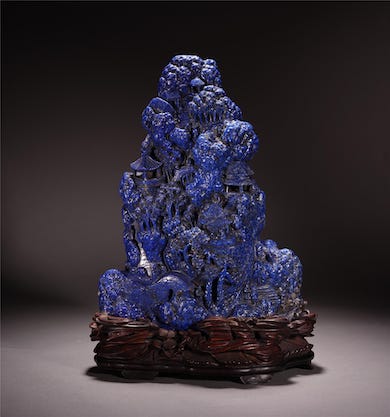
NEW YORK — Few artists can aspire to be as talented as nature. Over centuries, its forces have shaped rocks into elegant objects that have inspired Chinese painters and poets. The objects called gongshi (Chinese, 供石), better known as scholar’s rocks, began to be appreciated for their striking forms in the late Tang Dynasty (600-900) and gathered from riverbeds, on mountains, and in far flung locations. By the Song dynasty (960-1279), their place in history was cemented when Chinese scholars brought them into the studios where they wrote and painted. Scholars would draw inspiration from these rocks that represented nature — mountains in particular — gazing upon them in meditative contemplation. Many poems and essays were based on these rocks, and they have been subject matter for paintings.


